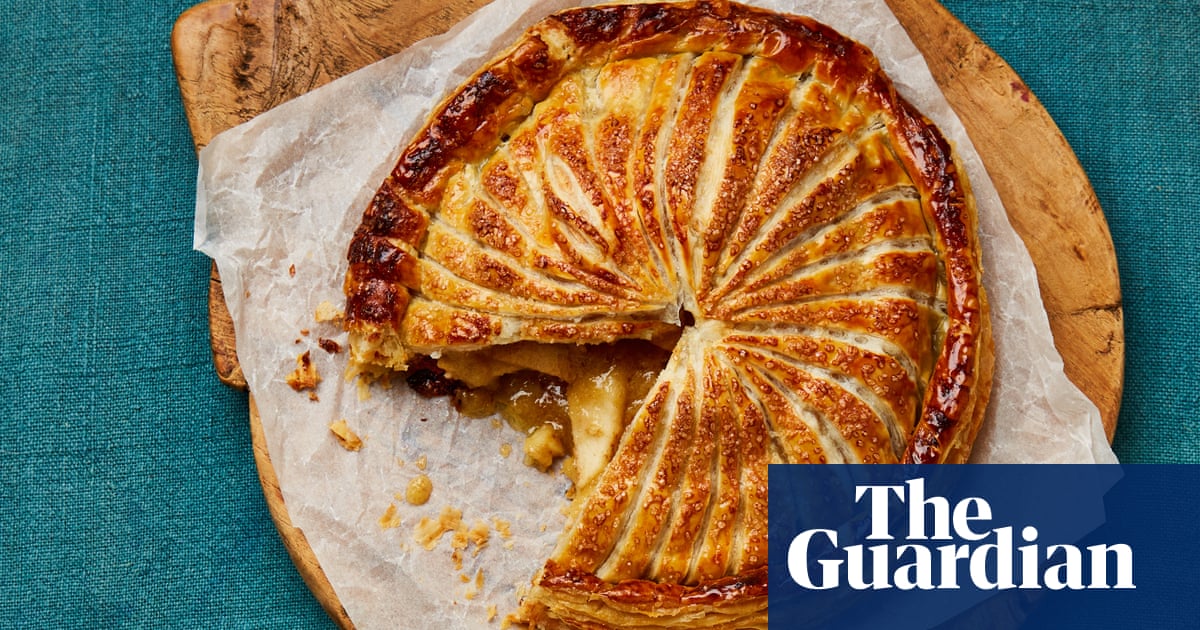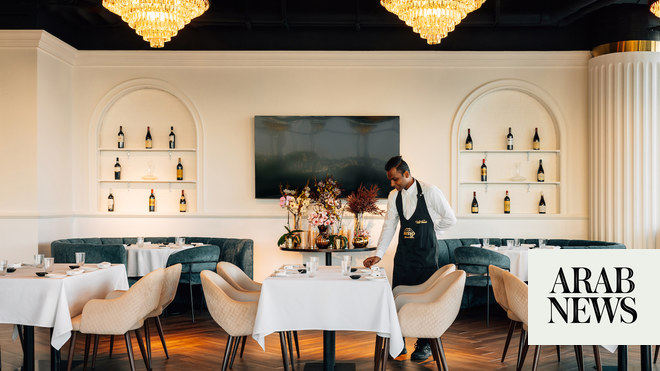
n Scandinavia, a season of cosy celebrations mark the dark period of midwinter. From lighting candles on the first Sunday of advent to baking spiced biscuits and cakes to share with loved ones, people across the region come together several times during December, and the julebord (or Christmas smörgåsbord) held on the evening of 24 December is a simple feast of hot and cold dishes, usually prepared in advance so both the host and guests can relax together. This year, the nature of these celebrations will be disrupted, so I’ve adapted a few of my favourite seasonal recipes so they can easily scale down for a hyggelig celebration between two or three people. God jul, as we say in Norwegian – and let’s hope for brighter festivities in 2021.
Blow-dried roast duck with cherry gløgg sauce
Prep 30 min
Rest 3 hr +
Cook 2hr
Serves 6
For the duck
1 large duck (2½-3kg), or two small-medium ones (1¼-2kg), giblets and excess fat removed
3 litres hot chicken or vegetable stock
12 peppercorns
6 cloves
6 cardamom pods
3 bay leaves
3 cinnamon sticks
3 star anise
3 mace blades
1 large knob fresh ginger, chopped
Peel of 1 orange
For the cherry gløgg sauce
2 tbsp vegetable oil
3 banana shallots, or 1 medium-large red onion, peeled and finely chopped
300ml light red or dark rosé wine
150ml cherry brandy – I use Cherry Heering
300ml concentrated duck stock (see method)
5cm-long piece orange peel
1 small knob ginger
1 small cinnamon stick
3 cardamom pods
Lay the duck breast down in a large saucepan, and pour over enough hot stock to cover. (Depending on the size of your pot, you may need a bit more stock.)
Add the spices and citrus, bring to a boil, then turn down the heat, partially cover and simmer for 20 minutes. Turn over the duck and cook for another 20 minutes. (If your duck is particularly large, increase the cooking times to two lots of half an hour.)
Transfer the duck to a large platter and leave to cool for 15 minutes. Sieve the cooking liquor into a large saucepan, bring it to a boil and reduce by two-thirds, to concentrate the flavour. Set aside 300ml for the sauce, and save the rest for another use.
Once the duck is cool enough to handle, pat dry all over with kitchen roll, then lift on to a metal rack set over an oven tray. Using a hair-dryer, removing any diffuser or nozzle first, blow-dry the duck on the highest setting for at least 10-15 minutes, turning it often, so you get an even run-off of fat into the tray. Give the duck another good pat dry, and decant the melted fat into a clean jar (save it for roast potatoes). For extra crispiness, massage a thin layer of sea salt between the duck meat and skin. Leave the duck to cool for a few hours, or refrigerate, uncovered, overnight.
Take the duck out of the fridge an hour before you want to cook it: the less moisture there is on the skin now, the crisper the cooked duck will be, so pat it dry again. Heat the oven to 200C (180C fan)/390F/gas 6. With the tip of a small, sharp knife, pierce the skin all over, making sure not to go through to the flesh. Rub a thin layer of sea salt over the skin, lay the bird breast side down in a roasting tin and roast for 45 minutes to an hour, skimming off the fat into a bowl every 15 minutes or so (keep this for future cooking).
Meanwhile, start the sauce. Heat the oil in a medium saucepan over a medium-low heat, then saute the shallots for five to eight minutes, until soft and translucent. Add the wine and cherry brandy, bring to a boil and reduce by half. Add the reserved concentrated stock and remaining spices, and leave to simmer gently while the duck is roasting.
Transfer the rested duck to a board, drain its roasting juices into the sauce, and taste for seasoning: it should have a cherry kick. For extra acidity, add lemon juice or, for sweetness, orange or clementine juice and/or a spoonful of redcurrant jelly. Pour the sauce through a fine sieve to remove the spices, then keep warm.
Carve the duck, pour over some sauce and serve with the rest of the sauce in a jug alongside.
To scale down If you’re cooking for two to three people, roast a smaller bird and adjust the recipe downwards, reducing the timings accordingly. Any leftover duck meat is wonderful the next day, so it’s definitely worth the time and effort of doing a whole bird.
Make-ahead tips To save you cooking the whole dish from scratch on the day itself, divide it into stages over a couple of days: simmer the duck in stock on the first day, then roast it and make the gløgg sauce the next, along with other the accompaniments.
Winter leaf salad with clementine, fennel and candied walnuts
Prep 20 min
Cook 40 min
Serves 6
For the nuts
175g shelled walnuts
25g lightly salted butter, melted
1 egg white
3 tbsp soft brown sugar, or demerara
1 pinch nutmeg, cinnamon, allspice or cardamom (optional)
For the dressing
1 tsp grain mustard
1 tsp clear honey
3 tbsp vinegar of choice
6 tbsp oil of choice
Sea salt and pepper
For the salad
2 small-medium heads frisée, or the equivalent of mixed winter salad leaves
1 large (or 2 medium) fennel bulbs
6 clementines
Start with the nuts. Heat the oven to 180C (160C)/350F/gas 4. Scatter the nuts on a baking tray and roast for 10 minutes. Meanwhile, mix the melted butter, egg white, sugar and spices in a large bowl. Remove the nuts from the oven and turn the heat down to 120C (100C fan)/250F/gas ½.
Toss the nuts in the mixture, then return to the tray along with any excess mixture and bake for 30 minutes more, until lightly caramelised and crisp.
Scrape the nuts on to a sheet of parchment paper and leave to cool.
Wash, dry and roughly shred the leaves and put in a large bowl. Top, tail and quarter the fennel, then cut into thin slivers and add to the bowl.
Whisk all the dressing ingredients, and season to taste. Pour some dressing over the salad, toss to coat and repeat until everything is well dressed (save any leftover dressing for another day).
Peel and slice the clementines. Scatter the dressed salad on a large platter, add the clementine slices and sprinkle over the nuts (save any excess in an airtight container). For a little extra citrus flavour, finely grate some peel over the top, too.
To scale down Use half the leaves, fennel and salad, if you wish, and by all means halve the amount of dressing, too, though the full quantity will keep in a sealed jar throughout the Christmas season. Ditto the candied nuts, and this same method can be applied to other nuts, of course.
Make-ahead tips Both the dressing and nuts can be prepared well ahead. You can prepare the fennel earlier in the day and dress with around half the dressing if you wish. The winter leaves need to be dressed within the hour of eating, otherwise they’ll wilt too much.
Jansson’s temptation with potato, celeriac and rye crisp
Prep 15 min
Cook 1 hr 15 min
Serves 6
50g butter, cut into cubes, plus 15g extra for greasing
1 medium white onion, peeled and finely chopped
2 tbsp olive oil
3 large waxy potatoes, peeled, if you prefer
1 small celeriac, peeled and quartered
Sea salt and white pepper
125g Abba anchovies, drained and brine reserved
300ml creme fraiche
150ml double cream
50g stale rye bread, bashed or blitzed into crumbs
Heat the oven to 190C (170C fan)/375F/gas 5 and grease a large ovenproof dish with butter.
In a small-medium saute pan, sweat the onion in the olive oil over a low-medium heat for eight minutes, until soft and translucent.
Cut the potatoes and celeriac into 5mm-thick slices (use a mandoline, if you have one).
Randomly scatter a third of the potato and celeriac over the base of the greased dish, season, then top with half the anchovies and fried onion, and season again. Repeat with another layer of potato and celeriac and another of anchovies and onion, seasoning both, then top with the last of the potato mix.
Warm the creme fraiche, cream and reserved anchovy brine in a small saucepan, then pour over the mix until covered; you may need a little extra cream (or warm vegetable, chicken or fish stock).
Sprinkle the breadcrumbs and butter cubes over the top, then bake for 45-50 minutes, until the Jansson’s is bubbling, the potatoes and celeriac are soft and the top is crisp.
To scale down This can be halved easily. Finely slice any excess celeriac and add it to the fennel salad above, or to the sprout slaw. And if you’re not a fan of celeriac, use only potatoes. Store any leftover Abba anchovies in the fridge: they’re delicious the next day on buttered wholemeal or sourdough bread dipped in a soft-boiled egg.
Make-ahead tips The whole dish can be prepared a day ahead and kept in the fridge until ready to cook.
• And for Signe Johansen’s vegetarian alternative, go here












